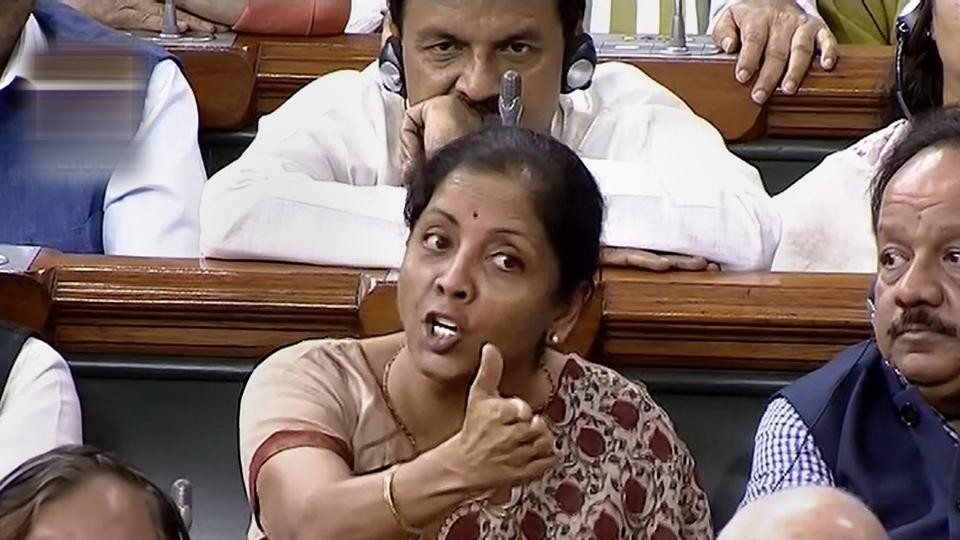
Finance Minister Nirmala Sitharaman has finally bitten the bullet. Her announcement cutting corporation tax through an ordinance to 22% without exemptions will reignite the economy.
Several immediate benefits will flow from this bold move. First, corporate investment, especially in manufacturing, will revive. An effective saving of 10-12% on corporation tax (for companies with a turnover of more than Rs 400 crore—which contribute an overwhelming amount to corporation tax revenue—it was till now around 33%) will give companies significant elbow room to invest in greenfield manufacturing projects. New manufacturing companies set up after October 1 will pay only 15% corporation tax, boosting entrepreneurship and industry.
Second, the unprecedented lowering of corporation tax by such a large amount will bring animal spirits back to the economy, turbocharge the stock market, attract foreign investment and burnish the Narendra Modi government’s reformist credentials after five years of socialistic tinkering with personal tax rates and import duties.
The steep reduction in corporation tax will involve foregoing revenue of Rs 1.45 lakh crore, leading to a slippage in the fiscal deficit. This can be neutralised by revving up privatisation targets. In a surging stock market, the Rs 18 lakh crore valuation of the 85 listed PSUs would enable the government to recoup some of the revenue shortfall. Several PSUs await privatisation this fiscal. The potential for revenue accretion from these could now exceed Rs 2 lakh crore—Rs 80,000 crore more than 2019-20 Budget estimates, further reducing pressure on the fiscal deficit.
This bold move should mark the beginning, not the end, of the government’s structured reform programme. Much more needs to be done across stressed sectors, especially automotive.Is Sitharaman wrong to attribute the collapse of sales in the automotive sector to millennials’ preference for Uber and Ola cabs? Not entirely. There are five key reasons for the crisis in the automotive industry and the broader economy.
One, the liquidity squeeze in Non-Banking Finance Companies (NBFCs) has dried up loans for not only the housing sector but for passenger cars, two-wheelers and trucks. Two, consumers are holding back purchases of vehicles till next April when BS-VI emission norms kick in for new models. Three, the economic slowdown has made car buyers cautious as wages remain stagnant and jobs hard to get. Four, paradoxically the removal of state border octroi checks under GST has cut the turnaround time for trucks by up to 50%, resulting in fewer commercial vehicles being needed by fleet operators for the same number of trips. The fifth reason, however, has caught public attention: millennials’ love for Uber and Ola. There are an estimated two million app-based cabs in India. Millennials aren’t the only pleased customers: several senior citizens are no longer replacing the one car they had (before their children grew up and left home) with an expensive new model. Hopping into an Ola or Uber is quick and painless for shorter rides.
There is a bigger existential problem that faces the automotive industry. India has long been an underserved market for clean, efficient public transport. That’s changing. Delhi led the way with its excellent metro network. Mumbai will soon have over 300 km of metro. Kolkata, Hyderabad and Bengaluru are building or expanding metro services.
The car as an aspirational status symbol has long faded in the West where the latest Mercedes Benz models are used as ordinary taxis. Only supercars that are like showpieces but unaffordable— Ferraris and Maseratis—turn heads anymore. Cars, in short, have become commoditised. But while Sitharaman was only partially wrong in her diagnosis of the automotive sector’s slowdown, she has been tardy in delivering to the Indian economy the steroid dose of macroeconomic reforms that are needed to bring India back to a 7-8% trajectory of growth.
Most disappointing has been her reluctance to adopt the high-powered panel’s Direct Tax Code (DTC) recommendations. The panel has proposed a simplified tax regime designed to increase compliance, cut paper work and put more money in the hands of the middle class. With private investment frozen, generating demand through deep tax cuts is the only way to restore consumer demand. That will boost comatose corporate earnings and energise the stock market. In turn, the Centre’s long-delayed privatisation plan, with 11 PSUs currently proposed to be sold, will fetch the exchequer more funds as market valuations surge.
Incremental reforms will no longer do. Sitharaman must recapture the reformist spirit of 1991 when Prime Minister P V Narasimha Rao and Finance Minister Dr Manmohan Singh were compelled to liberalise the broken economy. Alarmingly, the Modi government has reversed some of those reforms by re-imposing steep duties on a laundry list of imports. Protectionism of this sort didn’t work in four decades of Nehruvian economics. It won’t work now.
Start with agricultural tax for “rich” farmers. Around 700 million Indians and their families live off-farm incomes. Most are desperately poor. But a thin slice at the top is not. Based on acreage or income levels, rich farmers should be taxed. Only 4.1% of India’s farmers own landholdings above 10 acres. Set a limit based on acreage or annual income—10 acres or taxable income above Rs 10 lakh. Tax this under the simplified DTC regime. Politicians are among the biggest beneficiaries of agricultural tax exemption.


.jpeg)

